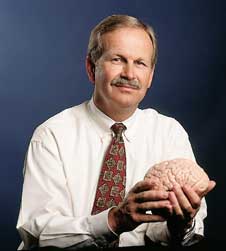How to Change Criminal Behavior by Accommodating Offender Learning Preferences
The educational histories of most criminal offenders reveal strong similarities and common problems. Though one history could never fit everyone, there is enough data to support the fact that many of these individuals share an educational experience full of failure and frustration. The typical history reads as follows:
- doesn’t reach his/her potential
- seems disinterested
- excessively truant
- easily bored
- disruptive
- short attention span
- loves competition
- refuses to do homework
- rude
- excels in hands-on experiences
Though this list is not exhaustive, it should help us understand the problem that exists when we implement educational programs in correctional institutions. Too often we ignore these histories as we design programs aimed at the criminal offender or other at-risk population.

An Inmate in Handcuffs
Standard educational approaches and the learning style preferences of most criminal offenders are simply not compatible. Therefore, correctional education programs must be carefully tailored to fit the style in which offenders learn. Greater success will only come when we are willing to change our approach. This does not mean we have to give up our goals, objectives, and evaluation process. It means that we must adjust our presentation to fit the way this target population learns.
Statistically, Orange learners can represent as much as 60-70 percent of an offender population, while 50-60 percent of a correctional education staff is typically Gold or Green. Green and Gold administrators and teachers need to learn important secrets for reaching at-risk populations from their Orange and Blue colleagues. If we focus our attention on using the best of the four teaching styles, we will have the greatest change of reaching a higher percentage of our target population. This varied educational approach will have the ability to reach all learners.
Without abandoning basic cognitive skills and value enhancement, correctional educational programs must instruct in ways that run contrary to standard educational approaches and speak to a unique audience. Learning in these programs must be experienced in an atmosphere of exploration and discovery and not in a world of rote and facts. Theories must not be offered in place of practice and, finally, variety in approach and methodology must drive the overall experience.
Dr. Erin Bigler, neuropsychologist and former professor at the University of Texas at Austin, described the power of properly designed programs this way:
Dr. Erin Bigler
This approach is more suited for the task of training individuals who have already failed in more traditional educational settings. Programs must follow a more inductive educational approach designed to require full brain involvement of the students. This discovery model of education is more student-centered and requires a facilitator rather than a traditional teacher.
This is by no means a call to do away with traditional education. It is, however, a plea for reason, for understanding and for a united educational front. If we will combine all teaching styles in an effort to reach all learning styles, we will all be edified in our efforts. We must begin to speak to others in the educational language that they understand.

